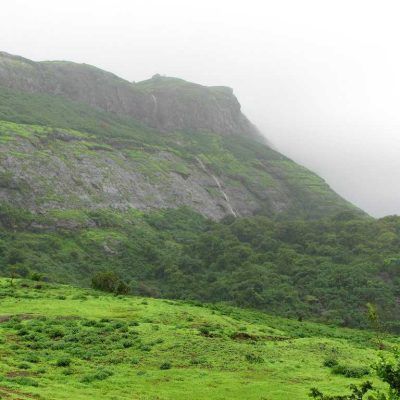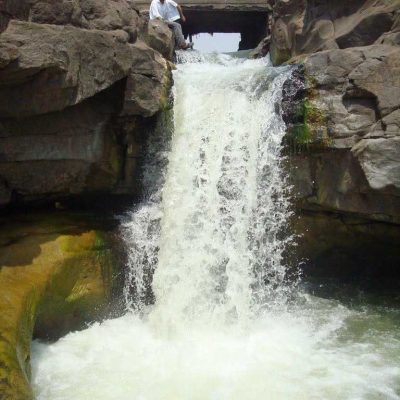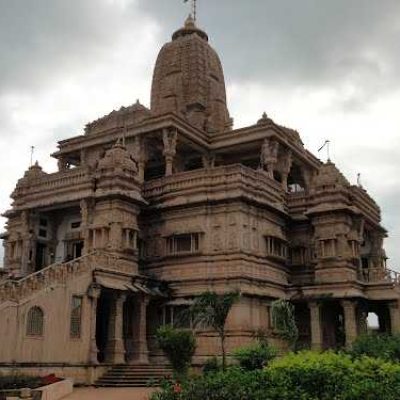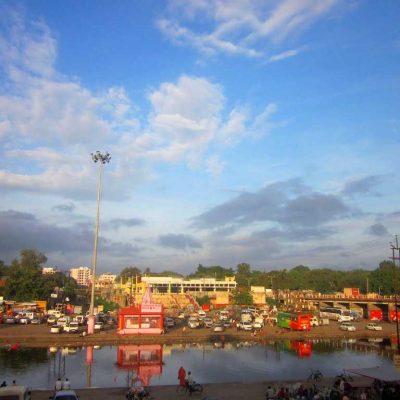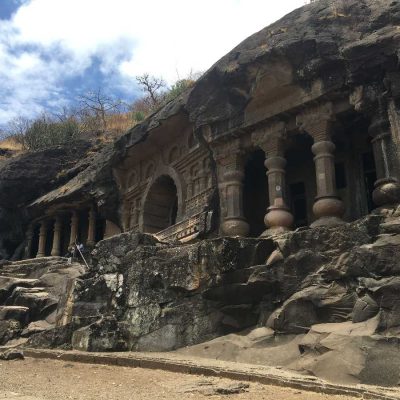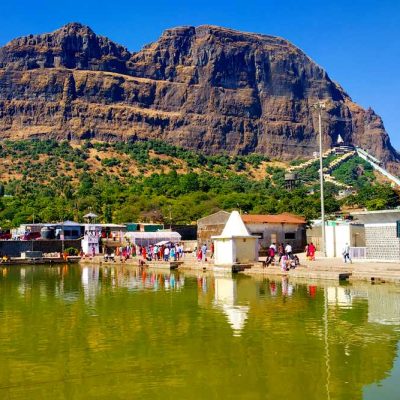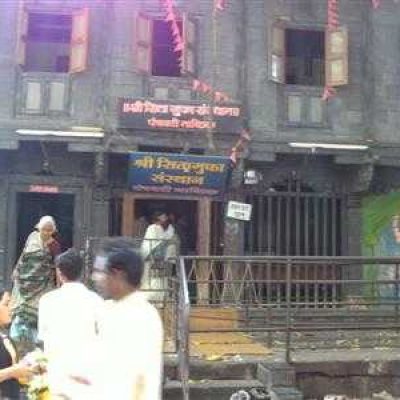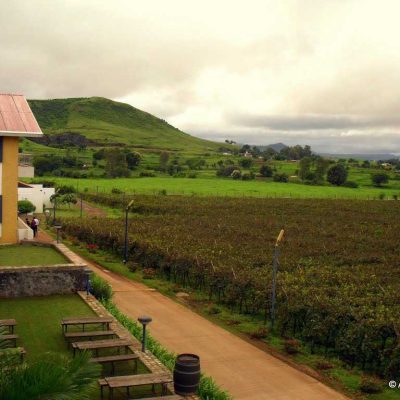Complete Guide about Trimbakeshwar Jyotirlinga Temple
-
Location
Trimbakeshwar Jyotirling, Mandir, Trimbak, Maharashtra 422212
-
Timings
Darshan Timings 5:30 AM – 9:00 PM
Rudrabhisek Timings 7:00 AM – 8:30 AM
Special Pooja Timings 7:00 AM, 1:00 PM, and 4:30 PM
Afternoon Pooja 1:00 PM – 1:30 PM
Shiva Golden Crown 4:30 PM – 5:00 PM -
Entry Fee
No Entry fee
For Sheegra Darshan Ticket Cost: Rs.200 per person.

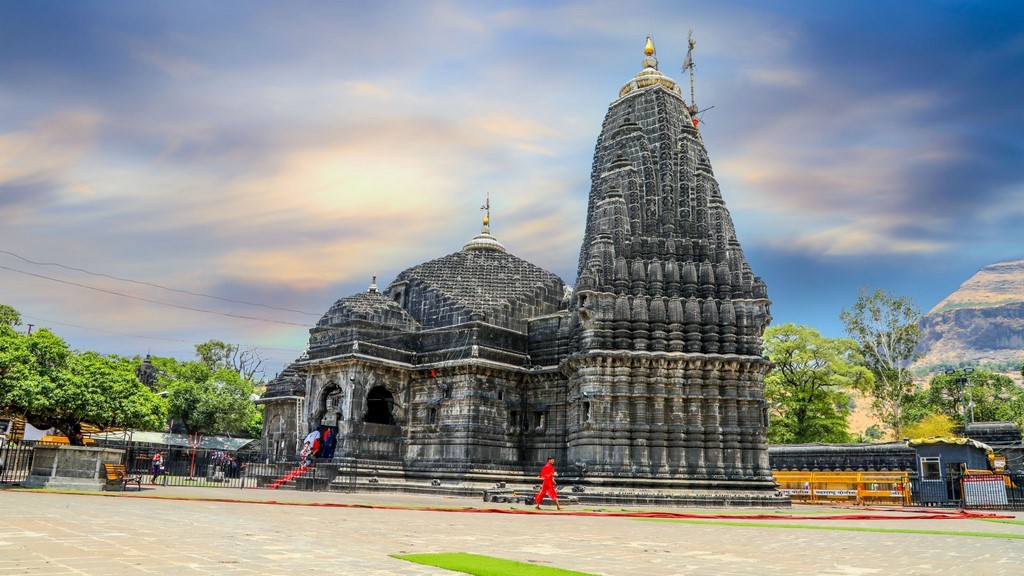
Trimbakeshwar Jyotirlinga Temple
About Trimbakeshwar Jyotirlinga
In Trimbak village (located in the Nasik district of Maharashtra), there is a revered Hindu temple known as Trimbakeshwar Shiva Temple (Supreme deity Lord Shiva). It is 28 kilometres away from Nashik City. An old Shiva temple known as Trimbakeshwar Temple is one of the 12 Jyotirlingas of God. The holy Godavari has its beginnings close to Trimbak. The “Shrimant Sardar Raosaheb Parnekar,” also known as Fadnavis of Indore State, constructed the Kushavarta Kund (holy Pond), which is also located on the grounds of the temple. The current Trimbakeshwar Temple was built by Shri Nanasaheb (Peshwa Balaji Baji Rao).
History of Trimbakeshwar Jyotirlinga Temple
The temple is situated at the base of the “Bramhagiri” mountain, from which the Holy Ganga River, Maharashtra’s longest river, flows. According to its history, Shri. Nanasaheb Peshwa constructed the Trimbakeshwar Temple between 1755 and 1786 AD. The term “Trimbak” refers to the Trinity (trideva) of Lords Brahma, Vishnu, and Mahesh. The Temple is constructed of black stone, and a 20 to 25-foot stone wall surrounds it, giving the impression that it is prosperous. Kushavarta Tirtha (holy Pond), which is situated on the grounds of the Trimbakeshwar Shiva Temple, is 400 metres away. It is a pond that is 21 feet deep and was constructed around 1750.
According to legend, the holy Ganga River returns to Kushavarta after disappearing at the Bramhahgiri Hills, adding to the shrine’s unparalleled holiness.
According to legend, a number of events took place inside the boundaries of the Trimbakeshwar Shiva Temple, including the arrival of Lord Rama to perform the Shraddha of their father Dashrath and the bathing of Sage Gautama in the Kushavarta pond (holy Pond). The Trimbakeshwar Temple’s Mukhya Dwar (main gate) directs us to the visit line, which is divided into 6-7 lines for the convenience of worshippers. A prominent Nandi (made of white marble) stands in front of the Shiva linga at the entrance of the temple.Nandi is supposedly Lord Shiva’s vahana (vehicle) (Shankara). It is said that if one speaks their wish or desire into Nandi’s ear, he will speak them to Lord Shiva. After the Nandi temple, there is a large “Sabha Mandap” hall (which is roomy for worship and meditation) and then the “Gabhara” main temple, where the linga is located.
Architecture of Trimbakeshwar temple
Trimbakeshwar Temple, which was dedicated on February 16, 1756, was open during Mahashivratri for anyone who chose to pray. The then-constructed temple underwent 31 years of renovations, and today it has a commendable atmosphere and a positive vibe.
The work done by the designated authorities is impressive, and the intricate workmanship of the temples shows the dedication of the country’s craftspeople. An magnificent edifice that is now accessible for darshan was constructed using rare stones and marbles that were supplied and sourced.
Through four gates, it is accessible from all four corners of the important directions. The opening date is inscribed in Sanskrit on the main gate.
Significance of Triyambakeshwar
The allies and devotees of Lord Shiva are drawn to this lovely location, giving them an excuse to relax and refresh. It is regarded as a one-stop remedy for numerous doshas and removes roadblocks from your unfortunate fate.
Simply said, it is the location where God will receive your prayers and religious rites in order to assist you in removing negative and unlucky periods from your life. On auspicious days, several Pujas are held in the Triyambakeshwar Temple.
No other location in the world permits you to conduct a religious ritual in the manner that is done here. Two of the unique ceremonies performed here are the Tripindi Vidhi and Narayan Nagbali.
To carry out these ceremonies within the Trimbakeshwar temple’s grounds under the priest’s supervision, people travel there from various towns and countries.
For devotees of Shri Saint Dnyaneshwar, who at the age of 24 entered Samadhi, Trimbakeshwar is a destination of adoration. On the occasion of his Punyatithi, a celebration is held annually. Millions of followers take part in the yatra and enjoy the saint’s goodness.
It is stated that Shri Saint Dnyaneshwar wrote a commentary on the Bhagwati Gita for laypeople to understand. His participation is invaluable and is regarded as a gem by the community.
According to a tradition, Lord Shiva was appeased by Brahmadeva’s penance on this mountain, which thereafter earned the name “Brahmagiri Parvat.”
On this peak, there was once an ashram belonging to Gautam Rishi.
He undertook arduous penance and delighted Mahadev in order to atone for the sin of cow slaughter. Sage Gautam asked Lord Shiva to take the form of a triad and erect a seat here in the form of a Jyotirlinga. This location then earned the name Trimbakeshwar.
The word “Jyotirlinga” is known to mean “Prakashstambh.” The Trimbakeshwar Shivalinga’s physical structure differs from the other 11 Jyotirlingas because it contains the Trimurti, or “Brahma-Vishnu-Mahesh,” in three thumb-shaped cups in the Shivpindi in Trimbakeshwar. This Shivling is where the Godavari river begins to flow continually. This type of Shivling is unique to the world.
Another characteristic of this temple is that the Jyotirlinga, which is the sole temple out of the 12 Jyotirlingas, is subjected to “Trikal Pooja,” a ritual that, according to local information, has been practised for more than 350 years.
Trimbakeshwar Temple’s Divine Jyotirlinga:
The Trimbakeshwar Yotirlinga is a revered shrine to Lord Shiva, Lord Vishnu, and Lord Bramha. The “Pillar of light” or “PrakashStambha” is symbolised by the term “JYOTIRLINGA.” The only Jyotirlinga in India that portrays Lord Shiva (Triymbakraj), Lord Vishnu, and Lord Brahma is this magnificent figure.
Compared to the other 11 jyotirlingas, the genuine Trimbakeshwar Shiva Linga has a very different construction. Instead of the “Linga” from which the sacred Ganga river springs, there are three tiny thumb-sized lingas (holes) that represent the Trinity or Trimurti, which is composed of Lord Brahma, Vishnu, and Mahesha, known as the universe’s Creator, Preserver, and Destructor. Every location where Shiva emerged is referred to as a Pillar of Light (Jyotirlingas).
A total of 64 jyotirlinga were thought to exist, 12 of which were thought to be heavenly. The twelve Jyotirlingas are Somnath (Gujarat), Malikarjuna (Shrisailam, Andhra Pradesh), Mahakaleshwar (Ujjain, Madhya Pradesh), Omkareshwar (Madhya Pradesh), Kedarnath (Himalayas), Bhimashankar (Maharashtra), Vaidyanath (Jharkhand), Kashi Vishwanath ( (Aurangabad, Maharashtra).
A jewelled crown (the crown is made of diamonds and other valuable stones) is placed on top of a tridev gold mask to cover the Trimbakeshwar linga. It has been claimed that the jewelled crown dates back to the time of the Pandavas.
Dekho Apna Desh
The DAD of Tourism
Get Direction to Trimbakeshwar Jyotirlinga Temple
Near Attractions
